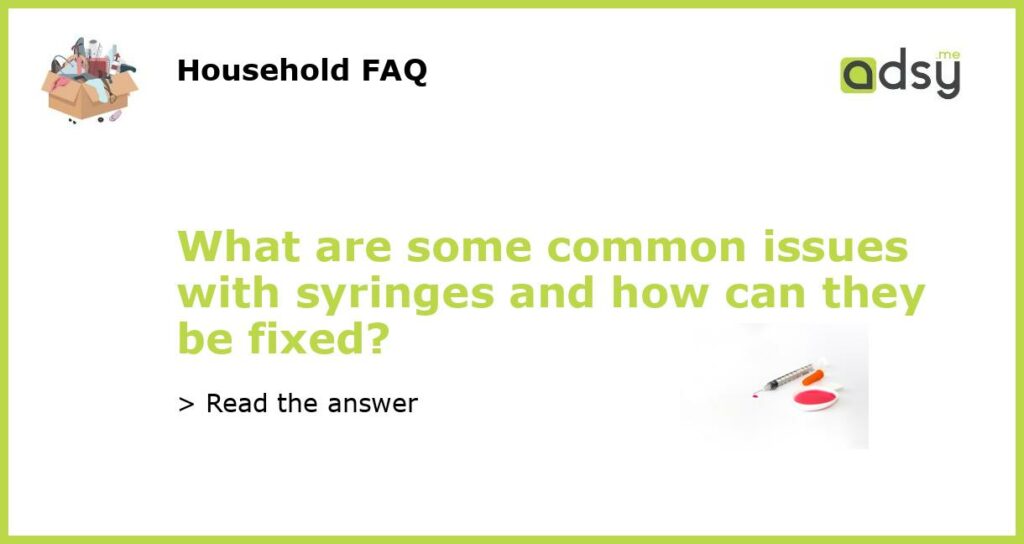Common Issues with Syringes
Syringes are essential medical devices used for injecting medication or withdrawing body fluids. However, they can sometimes encounter issues that may affect their functionality and safety. Here are some common problems with syringes:
Leaking or Dripping
One of the most common issues with syringes is leaking or dripping. This can occur when the syringe barrel is not tightly connected to the plunger or when the rubber tip of the plunger is damaged. Leaking can result in inaccurate medication dosing or the potential for contamination. To fix this issue, ensure that the syringe components are properly connected. If the rubber tip is damaged, replace the syringe with a new one.
Difficulty in Filling
Another issue that users often encounter is difficulty in filling the syringe with medication or fluid. This can happen when the plunger is stuck or when the syringe barrel is damaged or misaligned. To resolve this problem, first, check if the plunger is moving freely. If not, ensure that there are no obstructions or dirt within the syringe. If the barrel is damaged or misaligned, replace the syringe.
Inaccurate Measurements
Syringes are designed to provide accurate measurements for medication dosage. However, in some cases, users may encounter problems with inaccurate measurements. This can occur due to worn-out markings on the syringe barrel or improper alignment of the plunger and barrel. To address this issue, use a syringe with clear and legible markings. If the markings are worn-out, replace the syringe. When using the syringe, make sure the plunger is aligned with the desired measurement.
Needle Breakage
Needle breakage is a serious issue that can occur due to various reasons, such as using a blunt or damaged needle or applying excessive force during injection. Needle breakage may result in injury and the presence of broken needle fragments in the patient’s body. To prevent needle breakage, always use a new and sharp needle for each injection. Avoid bending or applying excessive force to the needle during use. If a needle breaks, dispose of it safely and replace it with a new one.
Contamination or Infection Risks
Syringes can pose a risk of contamination or infection if proper hygiene and safety measures are not followed. This can happen if the syringe is reused without proper sterilization or if the needle is contaminated with blood or other bodily fluids. To prevent contamination and infection, always use a new and sterile syringe for each injection. Dispose of used syringes in appropriate sharps containers to prevent accidental needlestick injuries. Follow proper hand hygiene practices before and after using a syringe.






